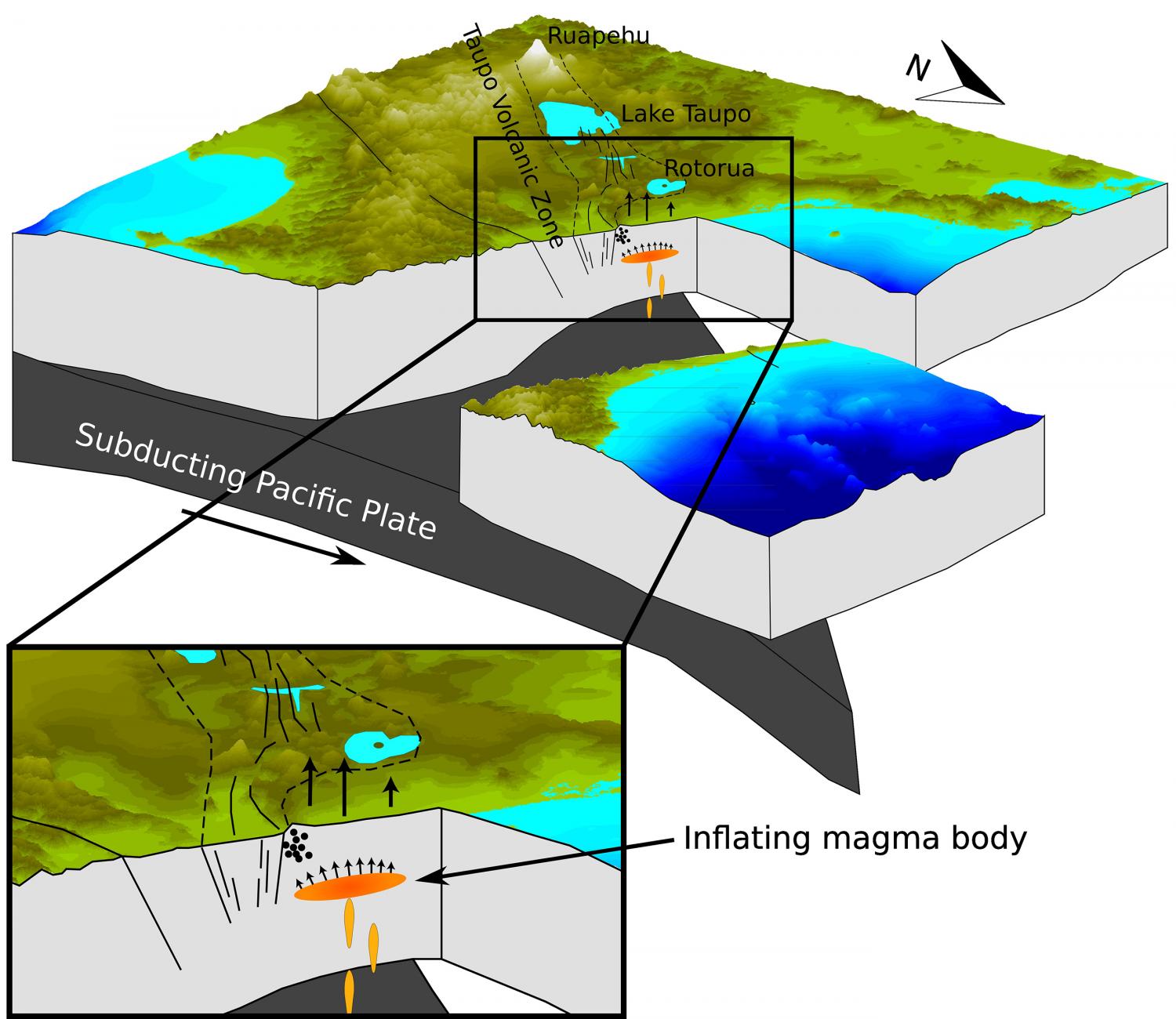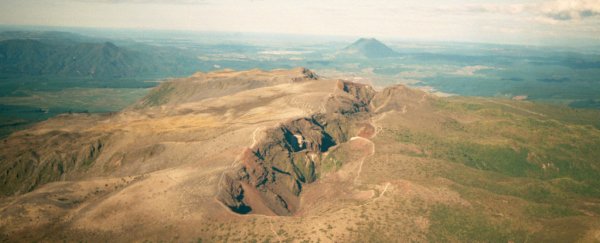Scientists have discovered magma building up beneath a town on New Zealand's North Island, and say it could signal the birth of a brand new volcano.
Since 1950, the researchers report that enough magma to fill 80,000 Olympic-size swimming pools has forced itself beneath the surface of the coastal town of Matata, about 200 kilometres southeast of Auckland, pushing the land up by 40 cm.
The good news is that the researchers aren't predicting an eruption any time soon - volcanoes take thousands of years to form, so it's still early days yet. But the discovery helps to explain a flurry of recent earthquakes in the region, and provides brand new insight into how volcanoes form.
The results were unexpected, because the town hasn't had an active volcano nearby for at least 400,000 years, and is outside of any active volcanic regions. "It was quite a big surprise," lead researcher Ian Hamling told Nick Perry for the Associated Press (AP).
Matata is home to around 650 people, and got the attention of geologists after experiencing higher than usual earthquake activity over the past decade.
They'd assumed this was due to some interesting tectonic plate activity, but after mapping the geological changes in the area over more than 60 years, the team showed that they're likely to be caused by magma stressing and breaking rock as it builds up below the region.
They calculate that the magma pool is still around 9.5 km below the surface, so isn't at risk of erupting in the near future, and might not even turn into a volcano at all - the magma might cool and harden instead. But monitoring the activity over the coming decades will greatly improve our understanding of how this process works.
You can see an illustration of what the researchers predict is going on below:
 Ian Hamling
Ian Hamling
That's particularly exciting for scientists, given that the town is just on the outskirts of the Taupo Volcanic Zone - one of the most active volcanic regions in the world.
"Although the ultimate fate of the magma remains unclear, its presence may represent the birth of a new magma chamber on the margins of arguably the world's most active region of silicic volcanism, which has witnessed 25 caldera-forming eruptions over the last 1.6 million years," the researchers write in Science Advances.
To figure out what was going on below the surface, the team used a range of satellites to scan in detail the changes to the region since 1950.
Along with regular GPS mapping, they used a system called interferometric synthetic aperture radar (or InSAR) to bounce radars at the region and measure the pattern at which they come back - allowing them to see centimetre scale changes in the elevation.
Using this data, the team found that an area of land about 400 square kilometres had risen by 40 centimetres since 1950, which suggests that a giant pool of magma is forming beneath the surface. And between 2004 and 2011, the uplift was particularly rapid, which correlated with a series of thousands of small earthquakes in the region.
The team now hopes to use this data to not only understand more about volcano formation, but to create better warning systems for the magma-triggered quakes in future.
Although the researchers are fairly confident with their results, over half of the area they're looking into is located offshore, which means the team can't scan surface level changes, and had to apply the information gained from the land-based region to this area too, which means there's room for error.
Still, Victoria Miller, a volcanologist with Geoscience Australia, who wasn't involved in the research, said it was a pretty exciting find worthy of more investigation. "The scientific analysis seems robust and notes the limitations of modelling an offshore source," Miller told AP.
